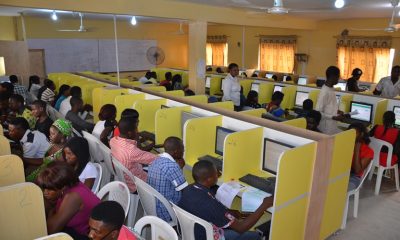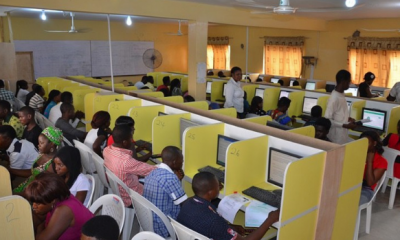NEWS
2018 Latest Updated English JAMB Syllabus Online

JAMB English Syllabus for 2018 JAMB examination is now available and can be accessed in this post. Jamb Use of English Syllabus And Topics To Read and prepare for JAMB exam.
The aim of the Unified Tertiary Matriculation Examination (UTME) syllabus in Use of English is to prepare the candidates for the Board’s examination. It is designed to test their achievement of the course objectives, which are to:
(1) communicate effectively in both written and spoken English;
(2) have a sound linguistic basis for learning at the tertiary level.
The syllabus consists of two sections:
- SECTION A: Comprehension/Summary
- SECTION B: Lexis, Structure and Oral Forms
DETAILED JAMB SYLLABUS FOR ENGLISH
| TOPICS/CONTENTS/NOTES | OBJECTIVES |
A. COMPREHENSION/SUMMARY(a) description NOTE: |
Candidates should be able to: i. identify main points/topic sentences in passages; ii. determine implied meaning; iii. identify the grammatical functions of words, phrases, clauses and figurative/idiomatic expressions; iv. deduce or infer the writer’s intentions including mood, attitude to the subject matter and opinion. |
B. LEXIS AND STRUCTURE(a) synonyms NOTE: |
Candidates should be able to: i. identify words and expressions in their ordinary, figurative and idiomatic contexts; ii. determine similar and opposite meaning of words; iii. differentiate between correct and incorrect punctuation and spelling; iv. identify various grammatical patterns in use; v. interpret information conveyed in sentences. |
C. ORAL FORMS(a) Vowels (monophthongs and diphthongs |
Candidates should be able to: i. make distinctions between vowel types; ii. differentiate between consonant types; iii. identify correct accentuation in individual words and connected speech. |
THE STRUCTURE OF EXAMINATION
SECTION A: COMPREHENSION/SUMMARY
(a) 3 comprehension passages (15 questions in all, 3 marks each) = 45 marks
(b) I cloze passage (10 questions in all, 2 marks each) = 20 marks
SECTION B: LEXIS, STRUCTURE AND ORAL FORM
(a) Sentence interpretation (10 questions in all, 2 marks each) = 20 marks
(b) Antonyms (opposite in meaning – 15 questions in all, 1 mark each) = 15 marks
(c) Synonyms (same in meaning – 15 questions in all, 1 mark each) = 15 marks
(d) Sentence completion (filling in the gaps – 20 questions in all, 1 mark each) = 20 marks
(e) Oral forms (15 questions in all, 1 mark each) = 15 marks
Total: 100 questions = 150 marks

























